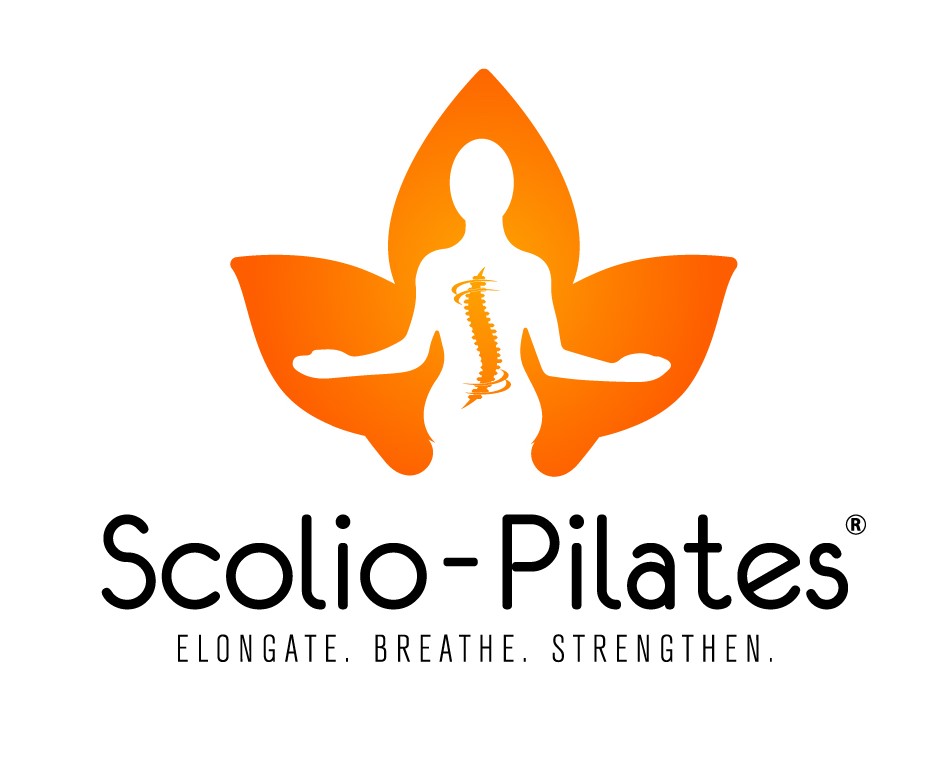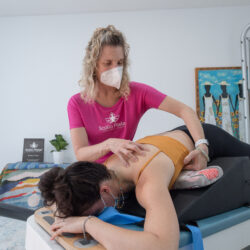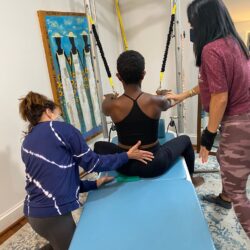Did your doctor tell you that you have scoliosis? Are you wondering what the big deal is? Or maybe it feels scary? Are your parents worried? Have things changed in your life because of scoliosis? Or are you just ready to return to life as normal and carry on?
We hope that after all the questions, that you will return to life as normal and carry one. Here’s a couple of things you can do to make that happen sooner, than later:
First.
As a teen with scoliosis, you are in a great position to make some small changes that will yield big results. It’s like planting a tiny little seed that turns into a very, very large plant. Did you know that giant sequoias have the tiniest little pinecones? It’s true!
The small changes you can begin today are here on this website and they are free. Elongate. Breathe. Strengthen. Your spine, like mine, has decided to grow in a position that is not quite as straight as what you see in a text book or an anatomy book. And that’s okay, straight is boring. Wouldn’t you rather take the more interesting path in life, anyway? Yep, me too. However, as much as we want to explore a windy path, it is really good if our spines can find home — a straighter path, because this gives us options. If you are able to elongate your spine toward a more neutral position (like the one in the anatomy book) you want to keep practicing this when you stand, and when you are sitting at your desk. If you are watching tv, you can give it a break. Just elongate throughout the day. Here’s a video you can do now.
Second.
As a teen with scoliosis, you need to learn what that means exactly. Why is everyone getting so excited over this??? Well, there’s a few reasons:
- Frequently, scoliosis is diagnosed for the first time, when someone is a teen, or a pre-teen, like you. So when you learn about something for the first time, yes, there’s going to be a lot of information being shared.
- Adolescent Idiopathic Scoliosis. This is a term that you might have heard, or maybe they abbreviated it as AIS. Idiopathic is a word that simply means, “we don’t know.” You are an adolescent with scoliosis, and we don’t know the cause of your scoliosis. But don’t feel frustrated by that, 80% of all scoliosis is idiopathic. The other 20% has a known cause.
- There’s something you can do. Yes, you might have been told there’s nothing that can be done for scoliosis except for waiting to see if it gets worse. If it gets worse, then we brace, and if it gets worse than that, we do surgery. However, there are studies that show that if we can begin scoliosis-specific exercise early, the results can have a great effect on scoliosis. Here’s an article all about the great value of starting a scoliosis-specifc exercise form, like Scolio-Pilates.
Are you ready to start today? Whether you are someone living with scoliosis or a professional helping those with scoliosis, join our Scolio-Pilates On Demand here. You will have two weeks of free scoliosis-specific exercises with a live class every Thursday at 3 pm ET (New York, USA) and access to over 100 classes. It’s time to take control. Be a Scolio-Mover!”
Monticone, M., Ambrosini, E., Cazzaniga, D. et al. Active self-correction, and task-oriented exercises reduce spinal deformity and improve quality of life in subjects with mild adolescent idiopathic scoliosis. Results of a randomized controlled trial. Eur Spine J 23, 1204–1214 (2014). https://doi.org/10.1007/s00586-014-3241-y
Are you a professional looking to serve those with scoliosis? Learn the steps towards becoming an Authorized Scolio-Pilates Practitioner.



